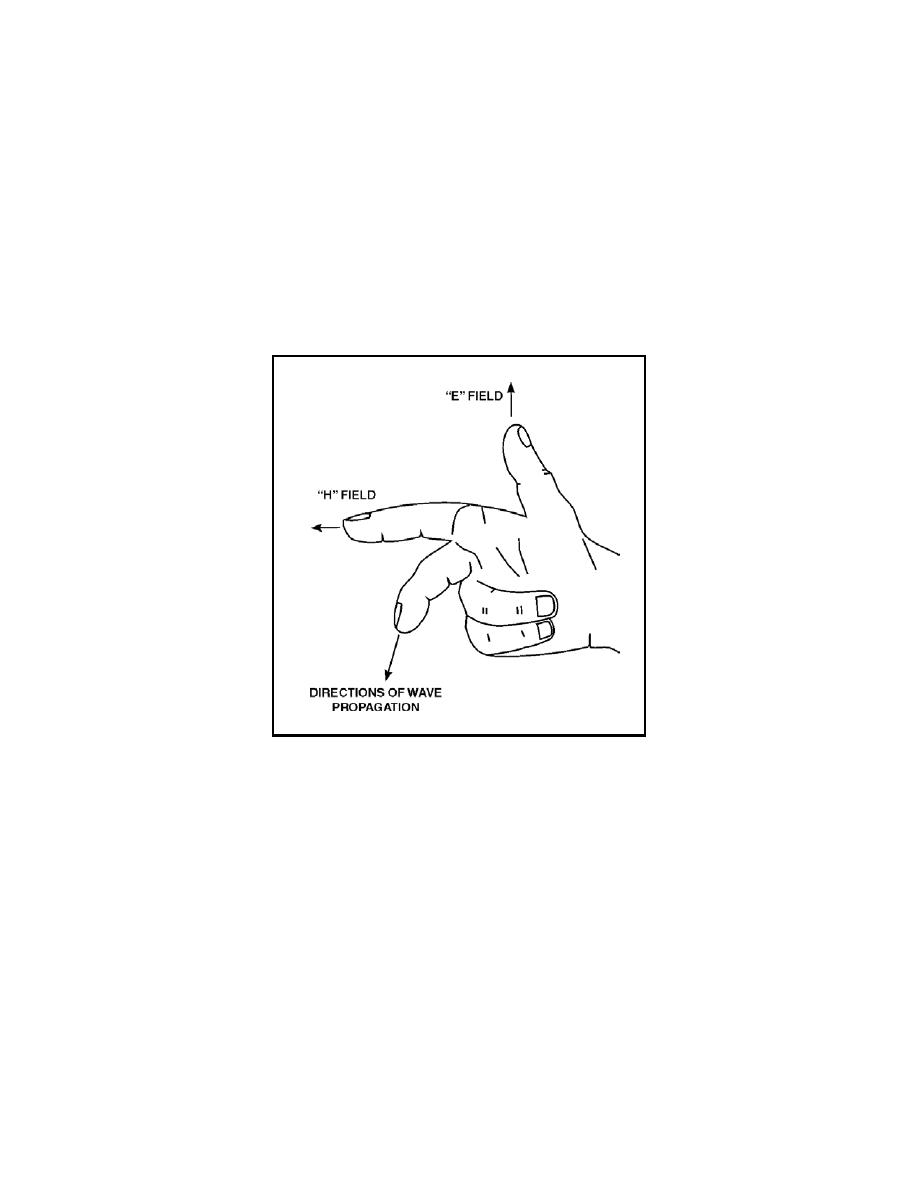
__________________________________________________________ Radio Wave Propagation
the wave appears. At a considerable distance the wavefront can be considered
as a plane surface at a right angle to the direction of propagation.
2-37. If you know the directions of the E and H components, you can use the
"right-hand rule" to determine the direction of wave propagation (see figure
2-6). This rule states that if the thumb, forefinger, and middle finger of the
right hand are extended so they are mutually perpendicular, the middle
finger will point in the direction of wave propagation if the thumb points in
the direction of the E field and the forefinger points in the direction of the H
field. Because both the E and H fields reverse directions simultaneously,
propagation of a particular wavefront is always in the same direction (away
from the antenna).
Figure 2-6. Right-Hand Rule for Propagation
2-38. Within the atmosphere, radio waves can be reflected, refracted, and
diffracted in the same manner as light and heat waves.
Reflection
2-39. Radio waves may be reflected from various substances or objects they
meet during travel between the transmitting and receiving sites. The amount
of reflection depends on the reflecting material. Smooth metal surfaces of
good electrical conductivity are efficient reflectors of radio waves. The surface
of the earth itself is a fairly good reflector. The radio wave is not reflected
from a single point on the reflector but rather from an area on its surface.
The size of the area required for reflection to take place depends on the
wavelength of the radio wave and the angle at which the wave strikes the
reflecting substance.
2-11



 Previous Page
Previous Page
